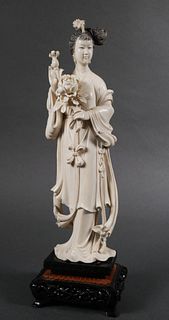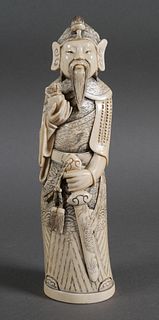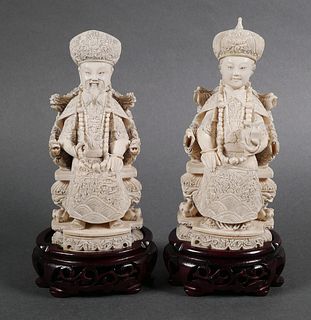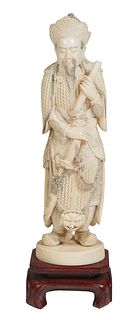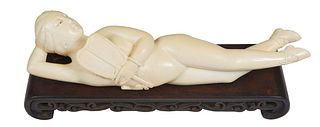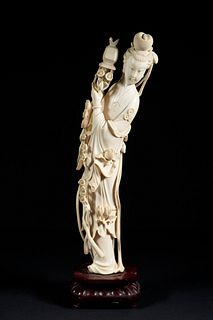Ivory has been used for carving sculpture for millennia (mostly, small statues or relief sculptures), decorative art items (such as religious objects, illuminated manuscript covers, and cases for valuables), and for practical purposes (pool balls, keys in pianos). Both artists and patrons valued Chinese ivory carvings for its rarity, and exceptional durability, particularly among sculptors who loved its smooth finish and cream-colored surface.
Ancient Chinese ivory carvings were revealed to Westerners through the items collected during the China Trade Era at the end of the 18th century. The quality of the carvings was among the best worldwide, including in Japan, which has long been renowned for its ivory carvings. These stunning pieces of art have evolved through thousands of years, involving an array of tools designed specifically for this craft. A finely worked Imperial fan emerged from these objects, embellished with exotic carvings, and enameled details. Bidsquare offers the largest selection of Antique Chinese ivory carvings, including Chinese Figurines and statues.
Chinese Ivory Carvings - A Brief History
Ivory carving is one of China’s oldest arts, evidence of which can be found in the beautifully carved ivory tombs of Shang dynasty rulers (16th C. to 11 C B.C.). The design and execution of these pieces suggest a long tradition dating back to the prehistoric period. The Shang carving skills carried over to the Zhou Dynasty (11th C. to 256 B.C.) with many specialized workshops producing bone and ivory. In the Warring States Period (475-221 B.C.), most of China's output consisted of arrowheads, hairpins, and spatulas as well as straight-sided and crescent-shaped combs. Since 1900, many tombs have been found to contain jade scabbards and various jade objects introduced during the Warring States Period. As well as the carvings, small disks, and pendants were discovered in Houma and Shanxi.
Bone, jade, and ivory carvings were still produced during the Han Dynasty (206 B.C.- 220 A.D.). In nearly 700 years from the Jin to Tang dynasties (265-907 A.D.), very little bone and ivory carving has been discovered. During the Song and Yuan Dynasties (907-1368 A.D.), a multitude of records were kept regarding the importation and crafting of ivory. Most ivory items produced in the Ming Dynasty (1368-1644) were small pieces, such as seals, brush rests, miniature statues, trays, boxes, brush pots, and hairpins, pendants.
There was a subtle elegance to the work, which was mostly devoid of ostentation and focused more on subtlety. These periods in Chinese history are also marked by ivory figurines. A great deal of work was involved in ivory carving during the Qianlong period, including crafting baskets, all handcrafted to such fineness that they were reminiscent of window screens. There were chess sets, elaborately inlaid boxes, sewing sets, buttons, and furniture, as well as doll heads, calling card cases, fans, and puzzle balls, made from ivory, as well as miniatures painted on the smooth ivory, mostly miniature portraits, and Hong Scenes.
Qianlong Emperor's reign (1735-1796) was a period of technical development in ivory carving during the Qing Dynasty (1644–1911). During the early Qing dynasty, Ming carving was still practiced. A variety of ivory carving styles continued to be produced in the second half of the 19th century, including calling card boxes, elaborate Luohan figures, Ming-style statues, European-style table boxes, and vases shaped like ancient bronzes, as well as imperial Kangxi and Qianlong period vases.
Looking for auctions near me? Visit Bidsquare's auction near me page to discover upcoming auctions near you.
 EstimateGBP£200 - GBP£300 $270.27 - $405.41
EstimateGBP£200 - GBP£300 $270.27 - $405.41 EstimateGBP£1,000 - GBP£1,500 $1,351.35 - $2,027.03
EstimateGBP£1,000 - GBP£1,500 $1,351.35 - $2,027.03 Estimate$500 - $1,000
Estimate$500 - $1,000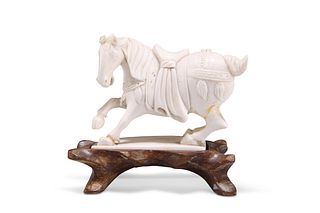 EstimateGBP£80 - GBP£120 $108.11 - $162.16
EstimateGBP£80 - GBP£120 $108.11 - $162.16 Estimate$1,000 - $2,000
Estimate$1,000 - $2,000 Estimate$600 - $1,200
Estimate$600 - $1,200 EstimateGBP£50 - GBP£70 $67.57 - $94.59
EstimateGBP£50 - GBP£70 $67.57 - $94.59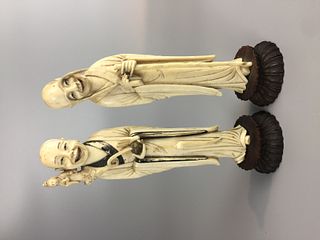 EstimateGBP£200 - GBP£300 $270.27 - $405.41
EstimateGBP£200 - GBP£300 $270.27 - $405.41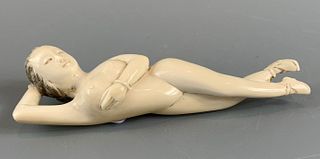 EstimateGBP£200 - GBP£300 $270.27 - $405.41
EstimateGBP£200 - GBP£300 $270.27 - $405.41


 EUR
EUR CAD
CAD AUD
AUD GBP
GBP MXN
MXN HKD
HKD CNY
CNY MYR
MYR SEK
SEK SGD
SGD CHF
CHF THB
THB Live Auction in Progress
Live Auction in Progress
